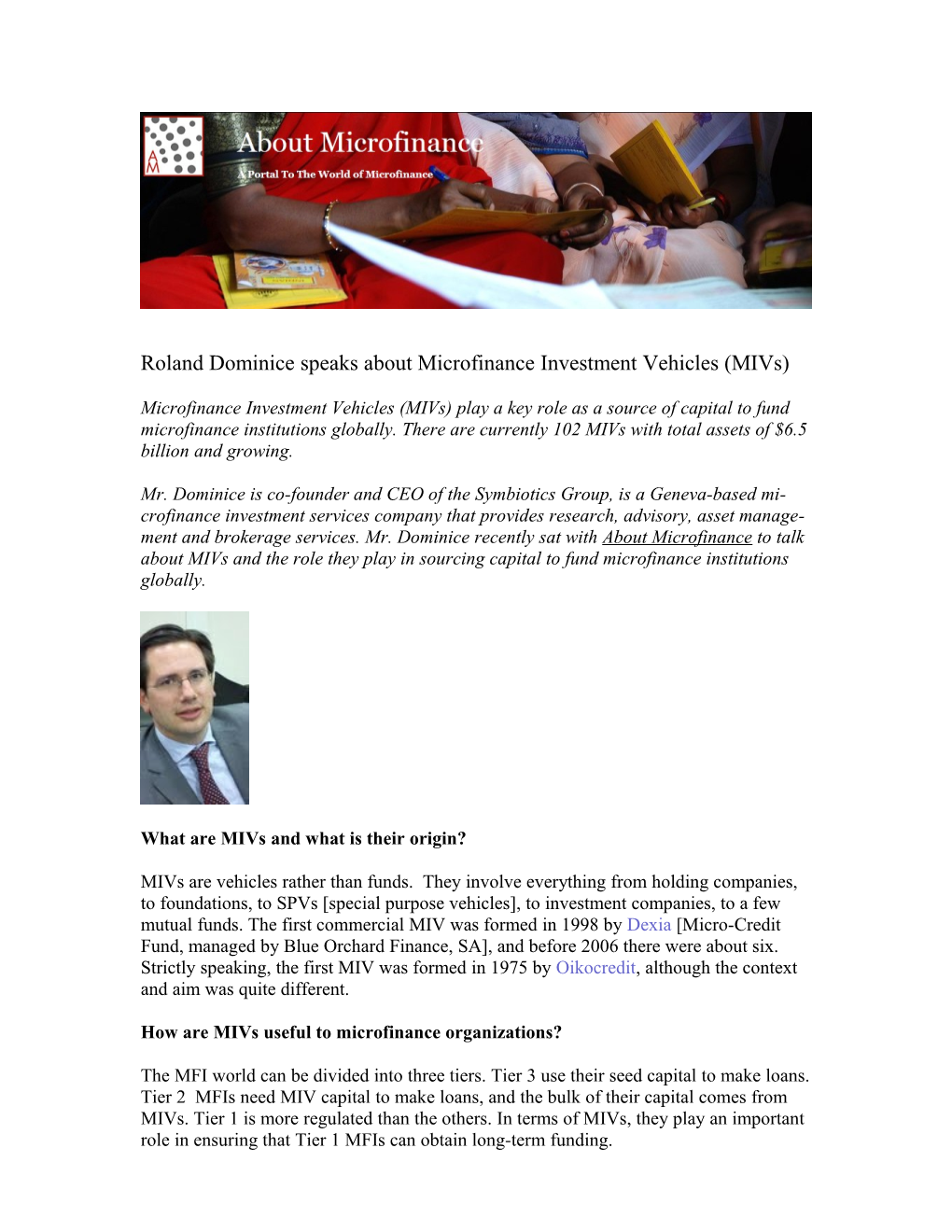Roland Dominice speaks about Microfinance Investment Vehicles (MIVs)
Microfinance Investment Vehicles (MIVs) play a key role as a source of capital to fund microfinance institutions globally. There are currently 102 MIVs with total assets of $6.5 billion and growing.
Mr. Dominice is co-founder and CEO of the Symbiotics Group, is a Geneva-based microfinance investment services company that provides research, advisory, asset management and brokerage services. Mr. Dominice recently sat with About Microfinance to talk about MIVs and the role they play in sourcing capital to fund microfinance institutions globally.
What are MIVs and what is their origin?
MIVs are vehicles rather than funds. They involve everything from holding companies, to foundations, to SPVs [special purpose vehicles], to investment companies, to a few mutual funds. The first commercial MIV was formed in 1998 by Dexia [Micro-Credit Fund, managed by Blue Orchard Finance, SA], and before 2006 there were about six. Strictly speaking, the first MIV was formed in 1975 by Oikocredit, although the context and aim was quite different.
How are MIVs useful to microfinance organizations?
The MFI world can be divided into three tiers. Tier 3 use their seed capital to make loans. Tier 2 MFIs need MIV capital to make loans, and the bulk of their capital comes from MIVs. Tier 1 is more regulated than the others. In terms of MIVs, they play an important role in ensuring that Tier 1 MFIs can obtain long-term funding.
Were MIVs impacted by the recent global financial crisis? If yes, how?
During the recent international financial crisis several MIVs which had a retail strategy saw a large inflow from new investors. Many people saw a logic behind investing in growth economies at that time, so there was incentive to place a large amount of money there. The problem, though, was that there was far less demand for funding so the MIVs had huge cash ratios with no yield. They were under pressure to use all of the cash pouring in, so some of the funds ended up loosening their loan standards and ended up with higher loan failure ratios down the line. Further, in some instances the cash ratios actually generated negative returns for the investors.
What is the outlook for MIVs in the next five years?
The industry only has about ten years of history. But in that time it has been growing quickly. MFIs have experienced approximately 30% growth per annum over the last ten years or so. If you estimate that the market will need approximately $3 billion more per year, you can get a rough idea of what may be happening in another five years. Regardless of the details, the trend is likely to be quite steady.
In terms of yield, it is important to note that there is going to be more competition, and this competition is likely to put more pressure to improve efficiency and the quality of prevailing business models.
There will also be more differentiation in terms of kinds of funds, fund quality, and managerial quality. Generally speaking, a large increase in diversity and the ability to differentiate between funds in many different ways.
Any other insights?
One thing which is interesting is the fact that, even though there are more than 100 MIVs, in reality there are only 10 to 12 managers controlling the entire market as each one manages a portfolio of funds.
